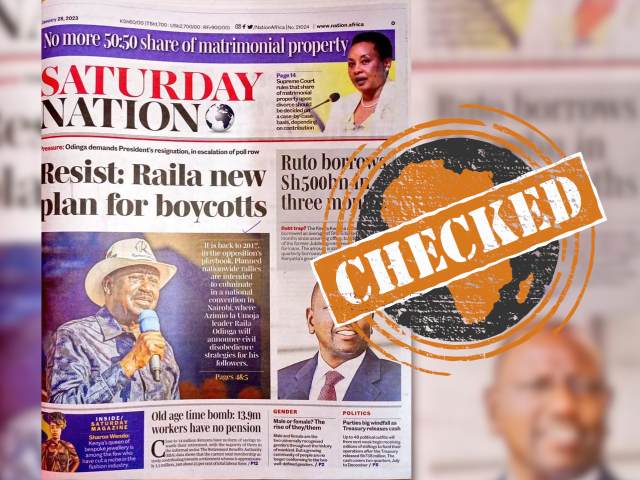This article is more than 9 years old
'Work opportunity' doesn't mean 'job'
The 2012/13 annual report of the department of public works stated that 3,054,027 “work opportunities” were created between April 2009 and March 2013. In the following year another 1,012,664 work opportunities were created.
This amounted to a total of 4,066,691 work opportunities created over five years. This was, however, below the target of 4.5-million work opportunities set by the Expanded Public Works Programme for the period.
However, a “work opportunity” is not a permanent job. A work opportunity is defined as “paid work created for an individual for any period of time” as part of South Africa’s expanded public works programme.
Many “work opportunities” last only a few months. For instance, a “work opportunity” in the “infrastructure sector” lasts an average of four months and six months in the “environment and culture” sector. Ideally, these opportunities are meant to equip people with skills that can help them seek further employment.
It should be noted that even though 4-million “work opportunities” were created it did not mean that 4-million people gained work. If someone was hired for one project and then moved on to another and another, each period of employment would have counted as a single “work opportunity”.
Economic growth slower and lower than others
The claim is largely correct, but lacks context. According to the World Bank “GDP growth in South Africa has averaged 3.2% a year since 1995”. This was confirmed by Africa’s Check’s own calculations based on real GDP tables.
But while Zuma’s numbers were correct, the context was noticeably lacking. Economic growth – evaluated in terms of real GDP – has slowed in recent years. In 2012, South Africa’s GDP growth fell to 2.5%. Figures released after this speech showed that it was 1.9% in 2013 and is estimated to be 1.4% in 2014.
Rian le Roux, chief economist at Old Mutual, said that to “overcome the backlog of 20 years of isolation [South Africa] needs to have fast economic growth”. Insufficient growth will not eliminate the backlog of unemployment or drive the creation of new jobs, and means that even where jobs are created they may not be sustainable.
This view was supported by a statement from the International Monetary Fund in October 2013 which praised South Africa’s strong macroeconomic policies but pointed out that the country’s economic performance had been slower and lower than other emerging markets – and that the growth rate “creates jobs, but not enough for the growing labo[u]r force and those currently without work”.
Unemployment rate higher after recession
According to labour data published by Stats SA early last year, 15,177,000 people were employed in the last quarter of 2013 and 653,000 jobs were created that year.
But Zuma’s statement was misleading because he focused on the absolute employment numbers and not ratios. He failed to acknowledge that the unemployment rate in South Africa was higher than it was before the global recession.
Prior to the recession South Africa’s unemployment rate was 21.9%. According to Stats SA, in the last quarter of 2013, 4,830,000 South Africans were classified as unemployed, resulting in an unemployment rate of 24.1%. But Stats SA uses a very narrow definition of “unemployment” which refers only people who are unemployed but actively seeking work.
An “expanded rate” of unemployment – which includes people who do not have a job and are available to work but have not taken active steps to look for work – suggests that unemployment levels were as high as 34% in the fourth quarter of that year.
The latest available data from the last three months of 2014, released by Stats SA this week, puts narrow unemployment at 24.3% and expanded unemployment at 34.6%.
Additional reading
Report: President Jacob Zuma’s sixth State of the Nation address fact-checked
Report: Wrapping up the [7th] State of the Nation
Factsheet: Unemployment statistics in South Africa explained




Add new comment